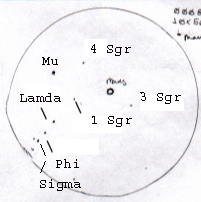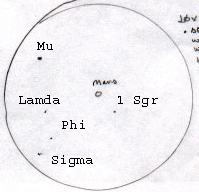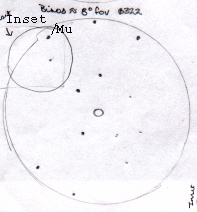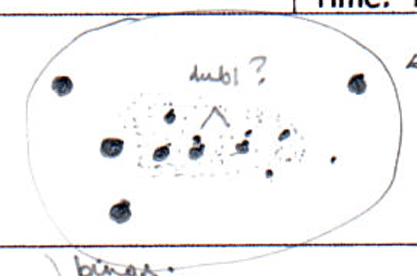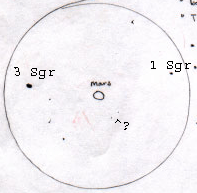 |
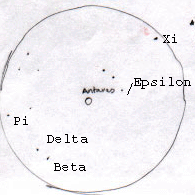 |
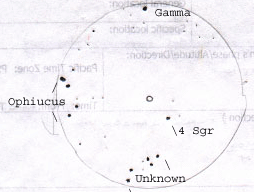 |
| *10 May 01, Chaco Canyon, NM.
*The identification of the two tiny dots indicated by the '?' is unknown to me. At first I thought they were Mars' moons, but discovered they couldn't be. Deimos and Phobos are much closer to Mars. I am currently trying to find out if they could be asteroids. Some notes about these two: I've only seen them twice - on this date and the next night; They stood out because compared to the other stars they were two tiny dots, not two tiny dots of light. *Mars is currently in Sagittarius (Sgr). |
*10 May 01, Chaco Canyon, NM.
*Antares is the brightest star in Scorpius. *Beta is named Acrab, and Delta is Dschubba.
|
*21 May 01, Buck Prairie, WA
*Mars is still in Sagittarius; Gamma's name is Alnasl. *Although it is not obvious Mars has moved slightly -- look at the sketch from 10 May, note where 3 Sgr is. If it, 3 Sgr, was on this sketch then it would be between the Ophiuchus stars and Gamma near the edge of the circle ... in the area of the three unidentified stars. In other words Mars is exiting Sagittarius headed towards Ophiuchus ... going backwards due to retrograde. |
| Other comments:
10 May - Mars looks like a waning moon with blue and red
around the rim.
|
||
